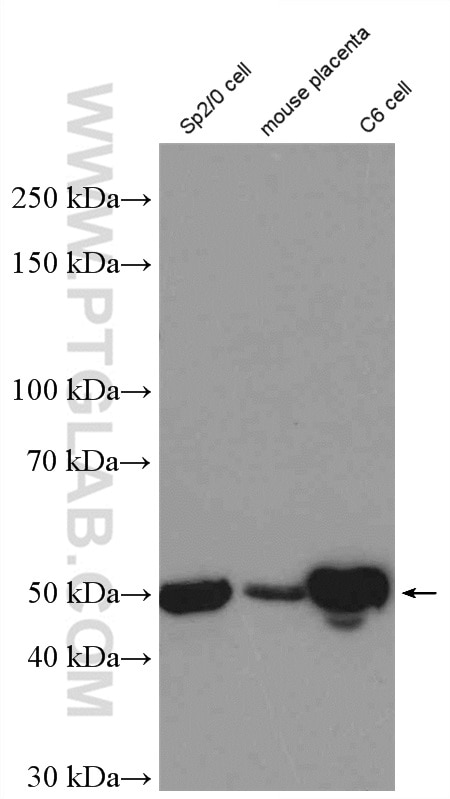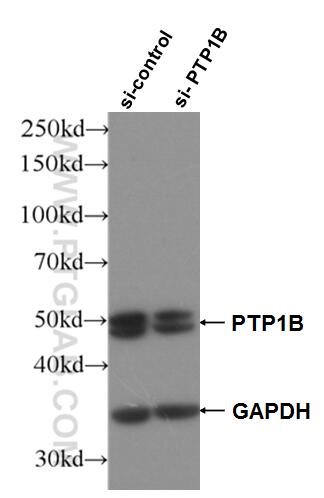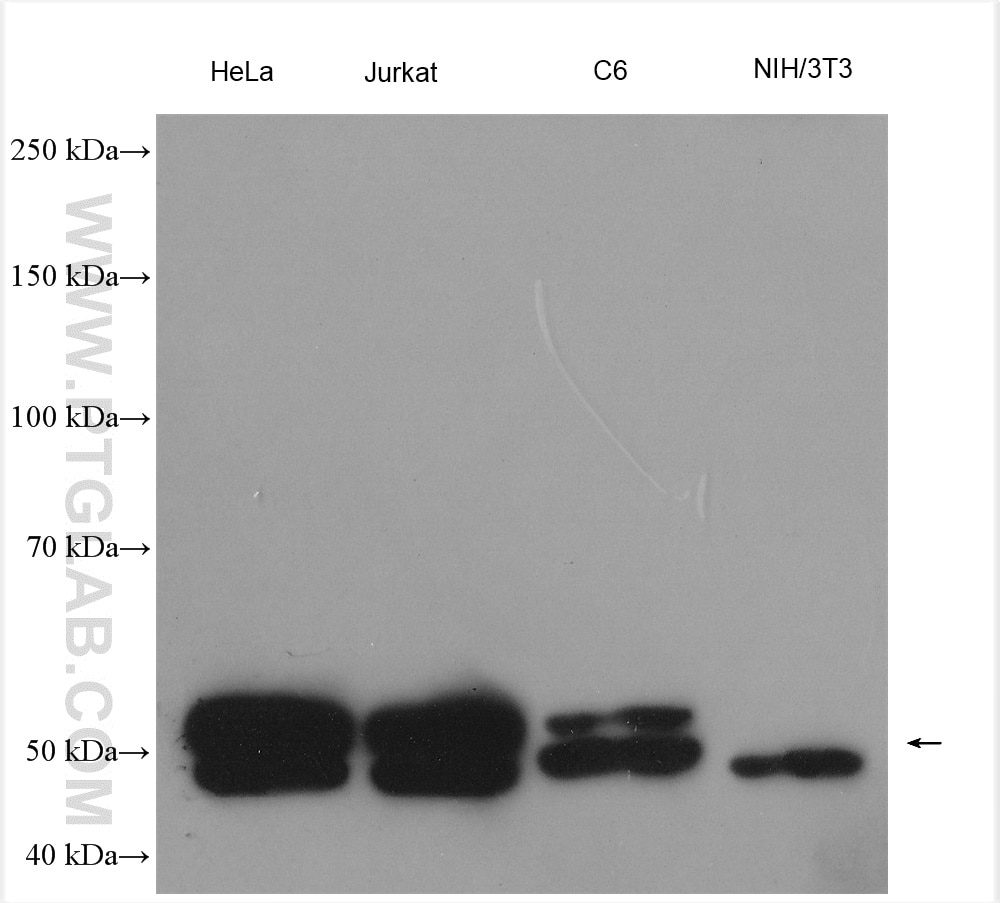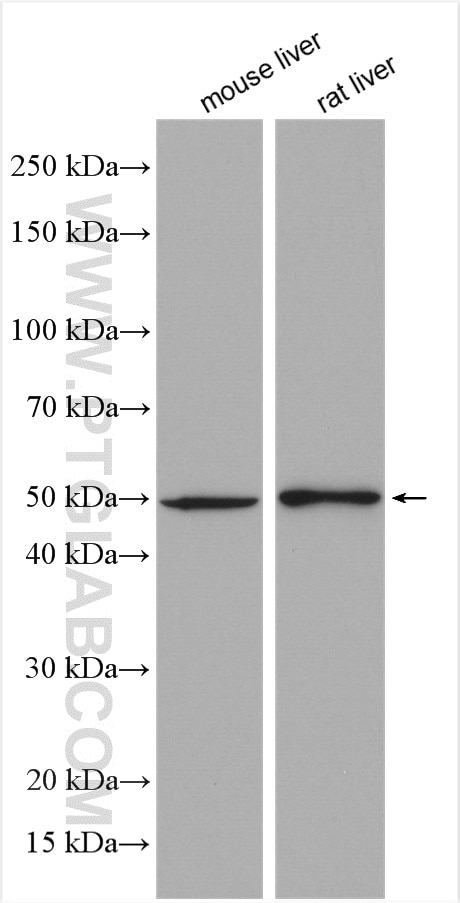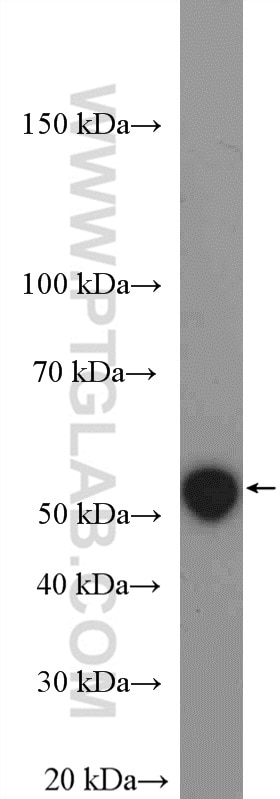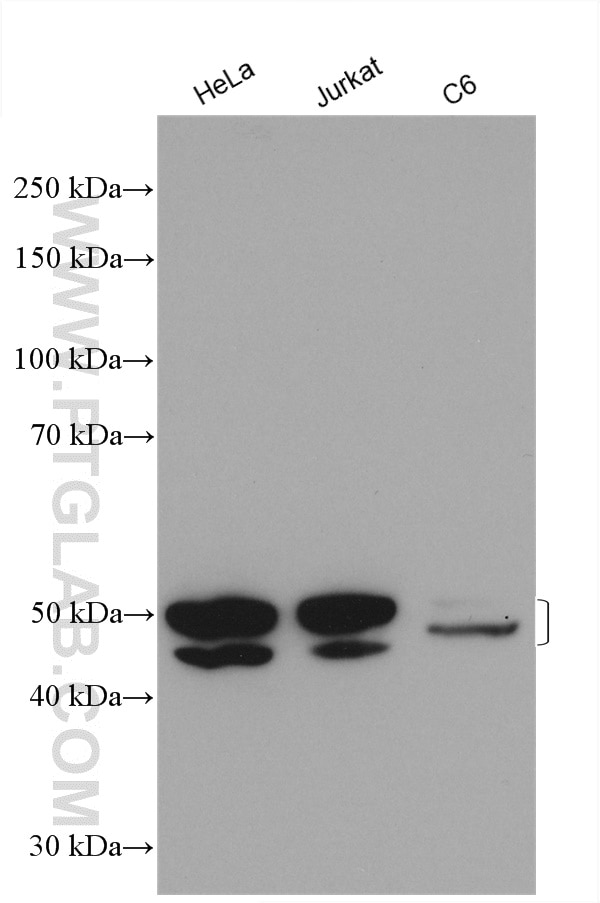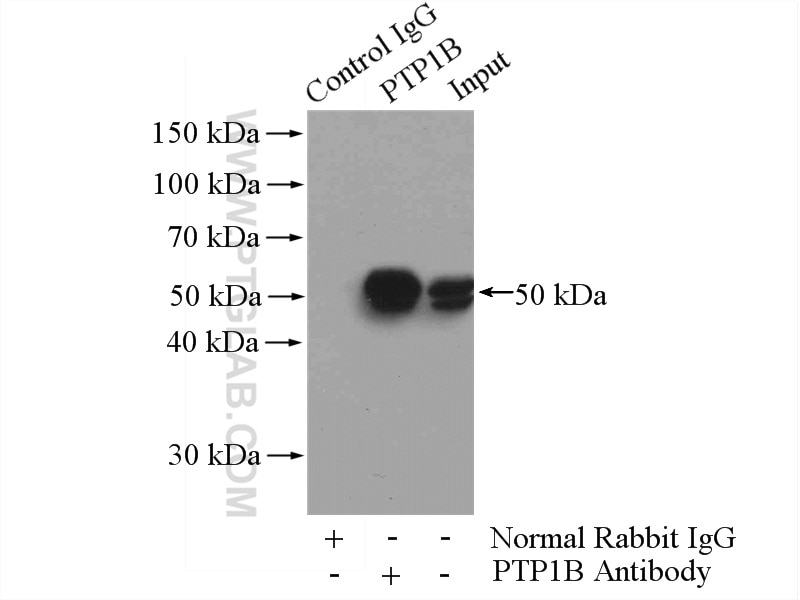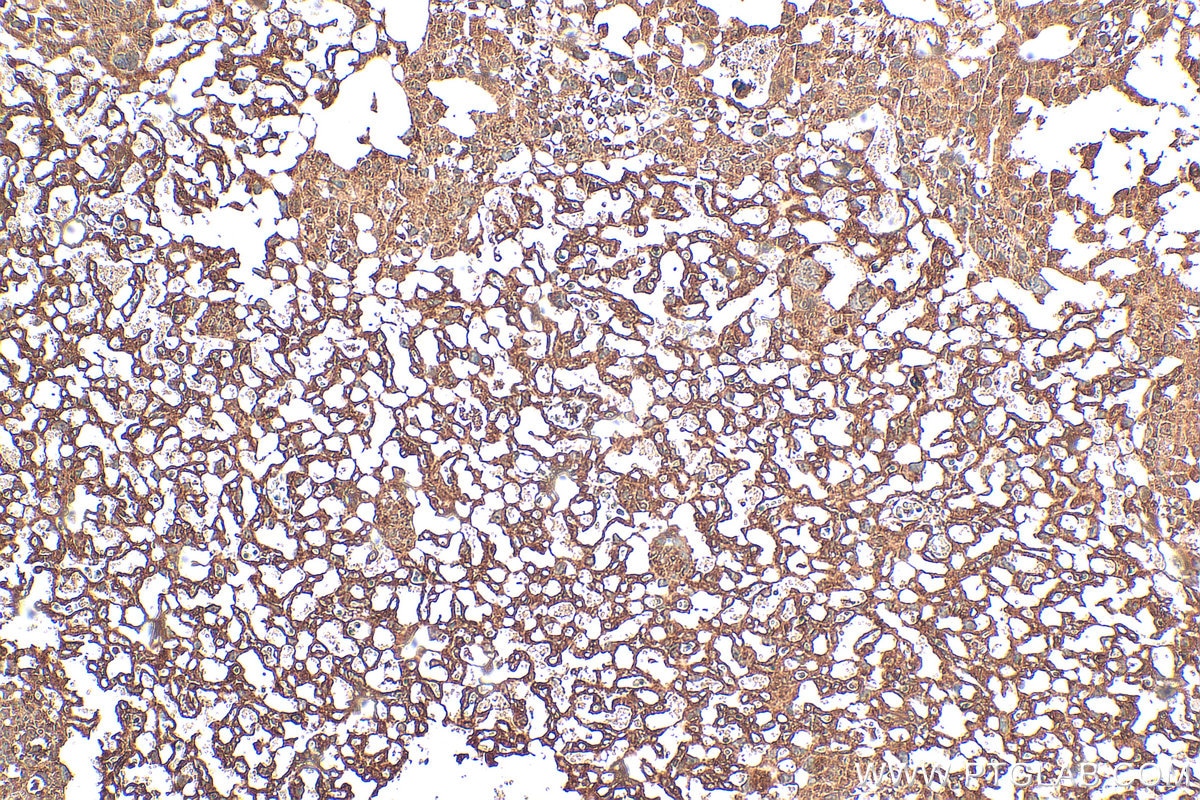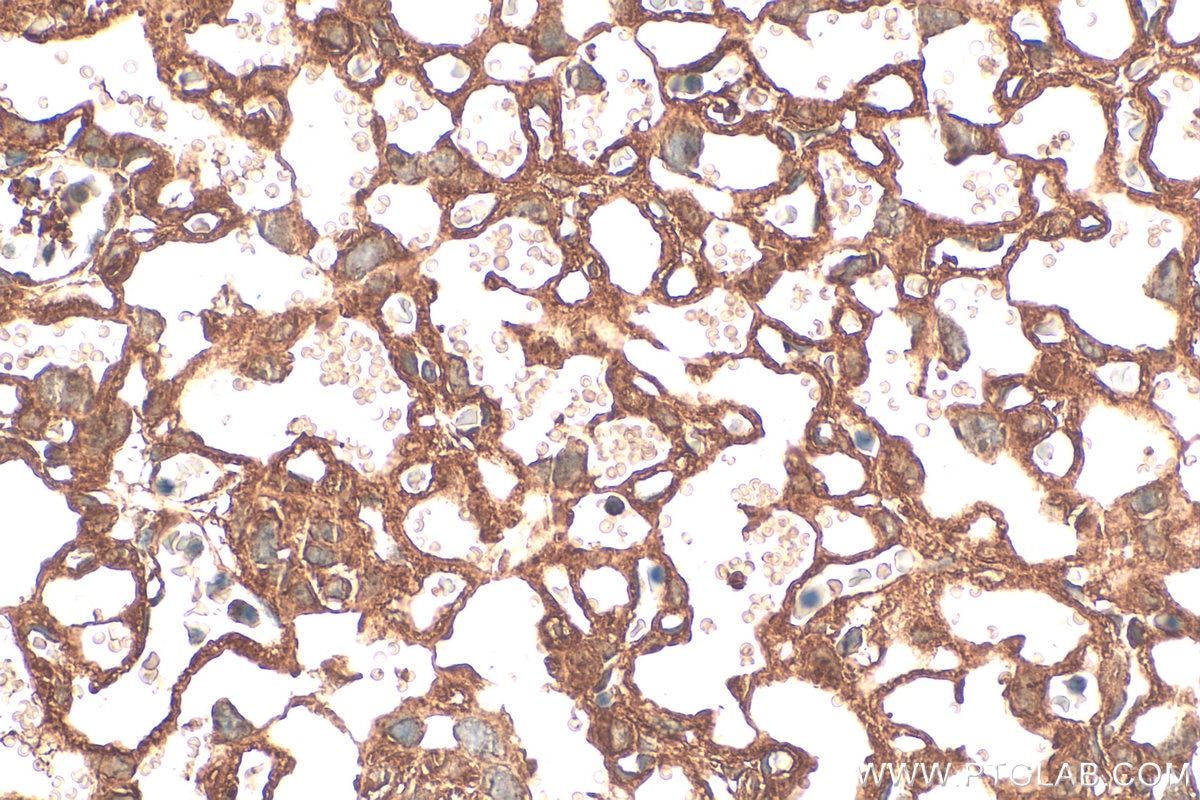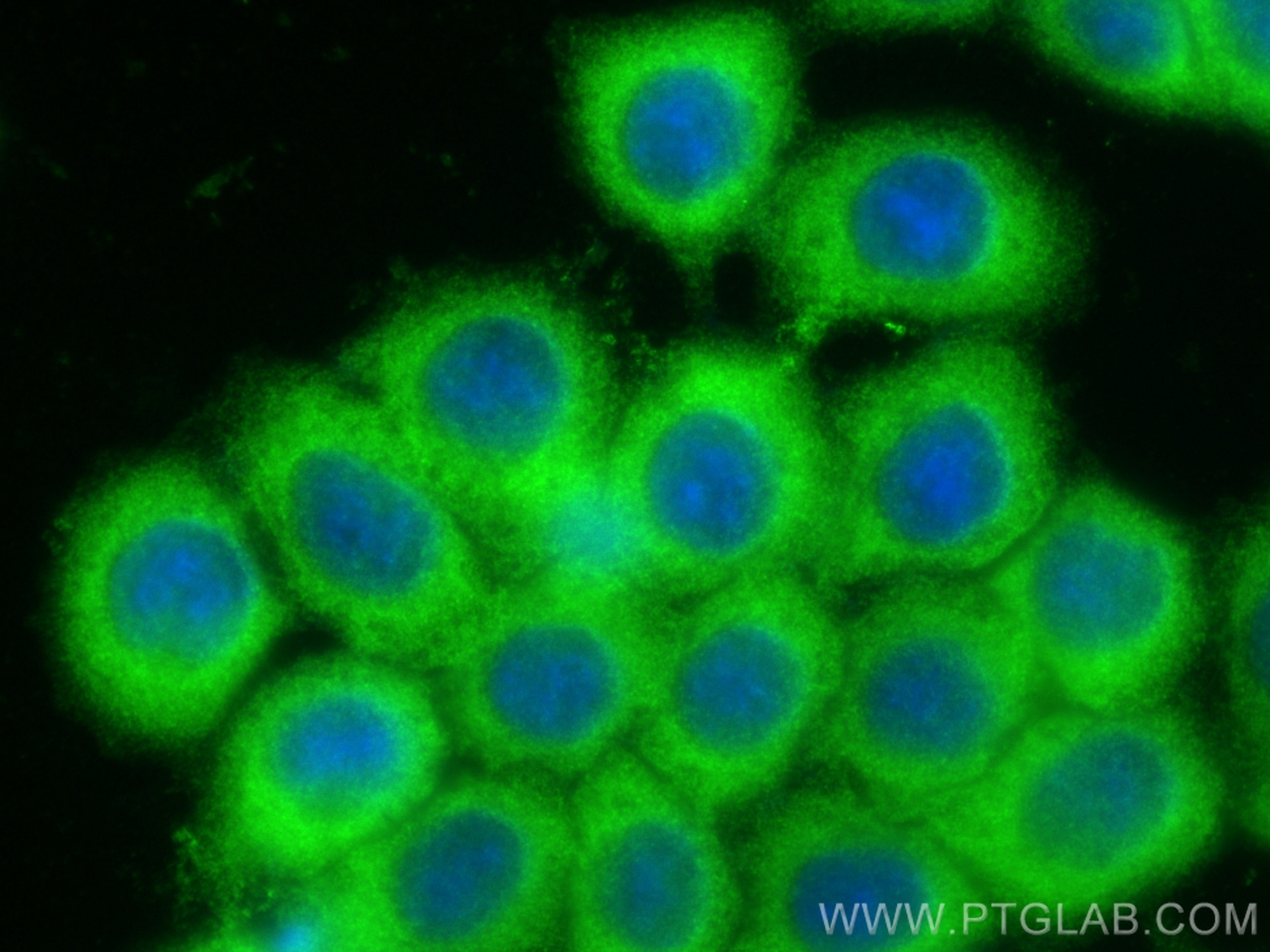- Phare
- Validé par KD/KO
Anticorps Polyclonal de lapin anti-PTPN1/PTP1B
PTPN1/PTP1B Polyclonal Antibody for WB, IHC, IF/ICC, IP, ELISA
Hôte / Isotype
Lapin / IgG
Réactivité testée
Humain, rat, souris et plus (1)
Applications
WB, IHC, IF/ICC, IP, CoIP, ELISA
Conjugaison
Non conjugué
N° de cat : 11334-1-AP
Synonymes
Galerie de données de validation
Applications testées
| Résultats positifs en WB | cellules Sp2/0, cellules C6, cellules HeLa, cellules Jurkat, cellules NIH/3T3, cellules THP-1, tissu hépatique de rat, tissu hépatique de souris, tissu placentaire de souris |
| Résultats positifs en IP | cellules A431 |
| Résultats positifs en IHC | tissu placentaire de souris, il est suggéré de démasquer l'antigène avec un tampon de TE buffer pH 9.0; (*) À défaut, 'le démasquage de l'antigène peut être 'effectué avec un tampon citrate pH 6,0. |
| Résultats positifs en IF/ICC | cellules BxPC-3, |
Dilution recommandée
| Application | Dilution |
|---|---|
| Western Blot (WB) | WB : 1:2000-1:10000 |
| Immunoprécipitation (IP) | IP : 0.5-4.0 ug for 1.0-3.0 mg of total protein lysate |
| Immunohistochimie (IHC) | IHC : 1:50-1:500 |
| Immunofluorescence (IF)/ICC | IF/ICC : 1:50-1:500 |
| It is recommended that this reagent should be titrated in each testing system to obtain optimal results. | |
| Sample-dependent, check data in validation data gallery | |
Applications publiées
| KD/KO | See 8 publications below |
| WB | See 38 publications below |
| IHC | See 9 publications below |
| IF | See 6 publications below |
| IP | See 2 publications below |
| CoIP | See 2 publications below |
Informations sur le produit
11334-1-AP cible PTPN1/PTP1B dans les applications de WB, IHC, IF/ICC, IP, CoIP, ELISA et montre une réactivité avec des échantillons Humain, rat, souris
| Réactivité | Humain, rat, souris |
| Réactivité citée | rat, Humain, singe, souris |
| Hôte / Isotype | Lapin / IgG |
| Clonalité | Polyclonal |
| Type | Anticorps |
| Immunogène | PTPN1/PTP1B Protéine recombinante Ag1878 |
| Nom complet | protein tyrosine phosphatase, non-receptor type 1 |
| Masse moléculaire calculée | 435 aa, 50 kDa |
| Poids moléculaire observé | 45-55 kDa |
| Numéro d’acquisition GenBank | BC015660 |
| Symbole du gène | PTP1B |
| Identification du gène (NCBI) | 5770 |
| Conjugaison | Non conjugué |
| Forme | Liquide |
| Méthode de purification | Purification par affinité contre l'antigène |
| Tampon de stockage | PBS with 0.02% sodium azide and 50% glycerol |
| Conditions de stockage | Stocker à -20°C. Stable pendant un an après l'expédition. L'aliquotage n'est pas nécessaire pour le stockage à -20oC Les 20ul contiennent 0,1% de BSA. |
Informations générales
PTPN1 (protein tyrosine phosphatase, non-receptor type 1) is also named as PTP1B or PTP-1B, and belongs to the protein-tyrosine phosphatase family and non-receptor class 1 subfamily. PTPN1 is involved in the regulation of several important physiological pathways, which regulates both INS and leptin signaling, and interacts with the epidermal-and platelet-derived growth factor receptors (PMID: 20101100). The gene might harbor variants influencing susceptibility to INS resistance and type 2 diabetes (PMID:15919813). The molecular mass of PTPN1 is 50 kDa, but sometimes some truncated forms can be detected as 48, 46, 39, 37 kDa due to non-specific proteolytic cleavage of PTP1B in different cells (PMID: 18253097).
Protocole
| Product Specific Protocols | |
|---|---|
| WB protocol for PTPN1/PTP1B antibody 11334-1-AP | Download protocol |
| IHC protocol for PTPN1/PTP1B antibody 11334-1-AP | Download protocol |
| IF protocol for PTPN1/PTP1B antibody 11334-1-AP | Download protocol |
| IP protocol for PTPN1/PTP1B antibody 11334-1-AP | Download protocol |
| Standard Protocols | |
|---|---|
| Click here to view our Standard Protocols |
Publications
| Species | Application | Title |
|---|---|---|
J Ginseng Res Ginsenoside compound K reduces ischemia/reperfusion-induced neuronal apoptosis by inhibiting PTP1B-mediated IRS1 tyrosine dephosphorylation | ||
Aging (Albany NY) Glycochenodeoxycholic acid induces stemness and chemoresistance via the STAT3 signaling pathway in hepatocellular carcinoma cells. | ||
J Cell Physiol Circular RNA circTET3 mediates migration of rat vascular smooth muscle cells by targeting miR-351-5p. | ||
Front Cell Dev Biol Tubeimoside I Inhibits Cell Proliferation and Induces a Partly Disrupted and Cytoprotective Autophagy Through Rapidly Hyperactivation of MEK1/2-ERK1/2 Cascade via Promoting PTP1B in Melanoma.
| ||
Eur J Pharmacol Oleanolic acid derivative alleviates cardiac fibrosis through inhibiting PTP1B activity and regulating AMPK/TGF-β/Smads pathway |
